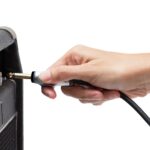AHPRA has sought to allay doctors’ fears before its new power – which has a ‘very high legal threshold’ – comes into effect on Monday.
Registered medical practitioners should have nothing to fear when Section 159Q of the National Law – the so-called “name and shame” clause – kicks into gear on Monday, say AHPRA’s leaders.
In a media briefing yesterday, Dr Anne Tonkin, chair of the Medical Board of Australia, said she would be “astonished” if a registered practitioner was publicly named and it turned out later there was no case to answer.
“In the case of registered people, it’s a matter of speeding up and informing the public in a case where we might be taking several months to dot all the i’s and cross all the t’s, but we have enough evidence to be very confident that there is a risk to the public,” said Dr Tonkin.
“I would be astonished if we end up in a situation where we’ve made a public statement about someone and it turns out later that there was no case to answer at all.
“It’s going to be the serious end of the notifications we get [when we would make a public statement], not the ones that may not have any substance to them.”
Dr Tonkin took issue with the power’s nickname.
“The ‘name and shame’ phrase – it really worries me that people are using that because the purpose of this is not to shame anybody,” she said.
“The purpose of this is to inform the public [about] a danger to their safety. We’re not in the business of naming and shaming. That’s not what this power is about.”
AHPRA CEO Martin Fletcher agreed, saying “we don’t want to cause unnecessary distress to practitioners”.
“I’d like to be very clear that this is for extreme circumstances where there is a really serious risk to the public, not just based on hearsay from a patient.
“We have been very attentive to procedural fairness to the practitioner in this as well. We’ve consulted with a range of professional groups about how we intend to administer this new power under the national law.
“Obviously, there is a strong focus here on public safety and public protection. But it is also balanced with a recognition of the importance of procedural fairness for practitioners involved as well. So I hope that is of reassurance to GPs.”
AHPRA’s official briefing paper on the new section says public statements will “allow AHPRA and the National Boards to warn the public about serious risks posed by individuals, including registered and unregistered practitioners, who are the subject of investigations or disciplinary proceedings”.
“This will be a rarely used power for exceptional circumstances only. There is a very high legal threshold to cross before they can be called upon.
“Most often it will be used to warn the community about dangerous unregistered individuals, rather than currently registered practitioners.
“We have existing powers for registered practitioners – called Immediate Action powers – that are effective in preventing further harm. Immediate action can include placing a suspension or conditions on a practitioner’s publicly visible registration. It would only be in exceptional circumstances that IA was not considered enough to protect the public and a public statement would be considered.”
Dr Jamie Orchard, AHPRA’s general counsel, said the threshold for making a public statement was “really high”.
“We’ve seen a lot of the public commentary about the public statement power, and it’s fair to say, I think that it hasn’t all been accurate,” he said.
“It’s important to stress right from the outset that we’re not going to be using this power to make a public statement every time we exercise a regulatory power.
“The public statement power will be used judiciously and in fact, very rarely, because in most cases, when we’ve used some other form of regulatory powers, such as our immediate action power, issuing a public statement would serve no purpose.”
Section 159Q would be used only if three criteria were met, he said.
“Firstly, the relevant person must be suspected of having committed a criminal offence under the National Law or be the subject of disciplinary investigation or proceeding.
“Secondly, AHPRA or the National Board must reasonably believe that the person poses a serious risk to the public.
“And thirdly, AHPRA or the national board must reasonably believe that it’s necessary to issue a public statement to protect the public.
“It is a really high threshold for the exercise of the power, especially the need to identify a serious risk, and then a necessity to also issue the public statement, so that threshold isn’t often going to be met.”
Both the AMA and the RACGP made submissions during the consultation process. The AMA felt the new powers were an “abrogation of the principles of natural justice” and was particularly outraged about the 24-hour window to file an appeal against the decision to make a public statement.
The RACGP raised concerns over the potential for social media “pile-ons”, especially in an instance when the practitioner was later cleared of any wrongdoing.
The statement is considered “made” when AHPRA or one of the boards posts it to its website, and it will be able to publicise the fact that a statement has been made via social media or a press release.
Affected practitioners will be notified via email and have that one day to appeal and file a stay application to AHPRA or the board that was investigating them.
A stay application has to be submitted with an appeal request in order to delay publication, and even then the board or AHPRA will go ahead with publishing if it believes the matter is urgent.
Otherwise, it will delay publication until a tribunal can discuss whether a stay is warranted.
If the agency or board decides to revoke its own announcement, it will have to announce that, too.





